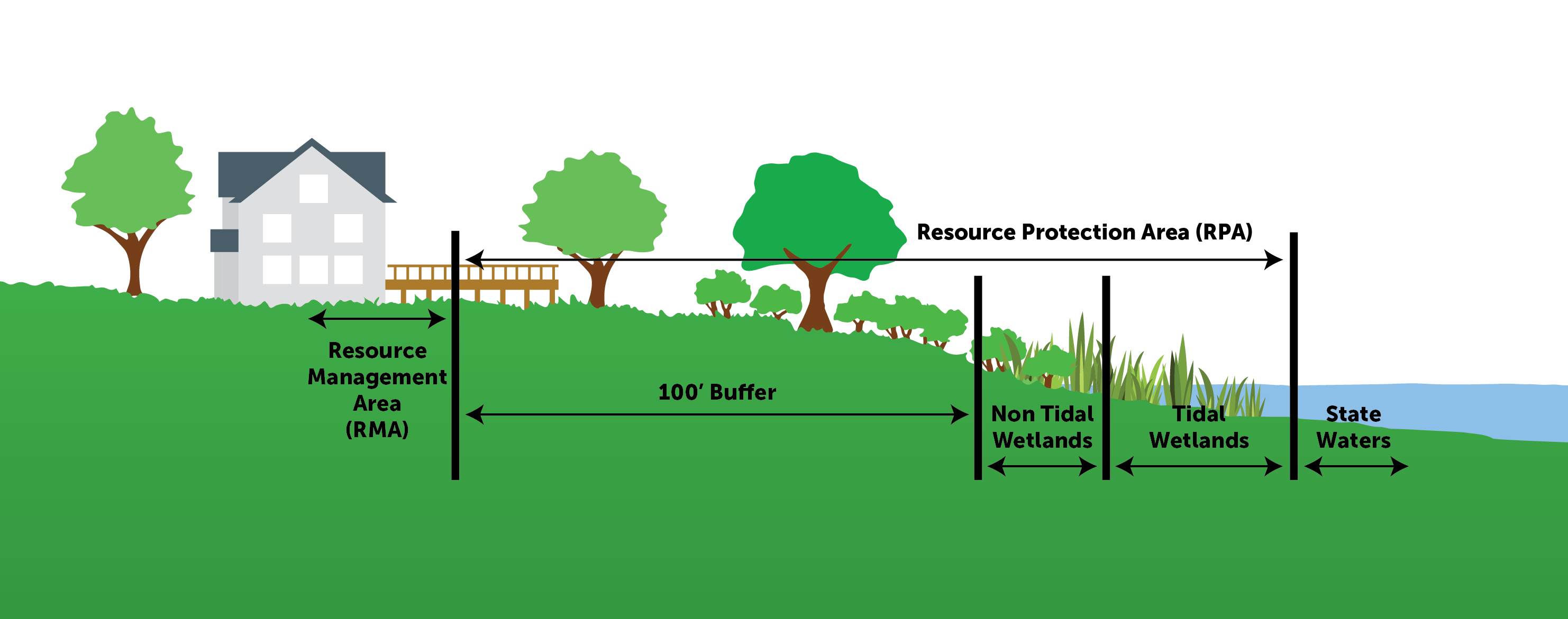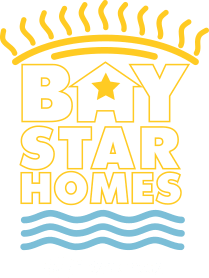The Good News
Do you live on or near the water? Do you have a beautiful water view and want to enhance it? Do you enjoy all that our waterways have to offer? If so, we have some good news to share. There are simple ways you can protect your view, preserve your yard, not harm any birds, plants, or animals that live near your waterway, and improve local water quality with some simple best practices.
Is Your Property Part of a Protected Area?
Waterfront properties in the Chesapeake Bay watershed may be subject to special regulations under the Chesapeake Bay Preservation Act (“Bay Act”). This area of environmentally sensitive land is collectively known as the “Chesapeake Bay buffer.” The regulations vary based on the distance from the water or wetlands.

Cross section of Chesapeake Bay Resource Protection Area.
See if your property is in or near the Chesapeake Bay buffer:
- Click the search box below and type in an address, beginning with the house number.
- Watch as the map will zoom to the chosen property.
- Alternately, you can also zoom in and click anywhere on the map to identify a property.
Responsible Landscaping
It’s understandable you want to create your backyard escape. It’s also important to understand what you do in your backyard affects the water quality in your waterway and the Chesapeake Bay. Activities such as mowing down to the water, removing trees, building new structures like sheds or decks, and adding pools can be harmful to local water quality and marine habitats.
The Chesapeake Bay is a national treasure that needs to be protected. It is the nation’s largest estuary and one of the world’s most productive. The Bay is home to over 3,700 species of plants and animals, draining 64,000 square miles of land. Your waterway is one of many that can help or harm the Bay.
If you’re thinking about making changes to your waterfront property, this is important to know: Since 1988, the Virginia Chesapeake Bay Preservation Act (“Bay Act”) has required cities and counties to balance development and water quality along our waterways… even on private property.
Before you start any outdoor improvement project near a waterway, check with your city or county to see if your property is within the buffer area and if you’re required to get CBPA approval or a permit. Your city or county has what you need to know, as well as staff to help ensure you’re making the right decisions. All you need to do is call your local planning or environmental department for more information.
Good to Know
- Resource Protection Areas (RPAs) are critical areas within the watershed. They are usually adjacent to waterways, the most important areas to protect, and are subject to more regulations.
- Resource Management Areas (RMAs) are adjacent to RPAs and may extend about 100 feet landward or include all remaining lands within a locality. RMAs include land types that have the potential for causing significant water quality degradation or for diminishing the functional value of a resource protection area if improperly used or developed.
- A buffer is a vegetated area within the RPA (about 100 feet) with trees, shrubs, and plants that protects the shoreline from erosion and improves water quality by filtering out pollutants from stormwater runoff.
- Tidal wetlands are vegetated and non-vegetated areas where the water meets the land, they are periodically inundated as the tide comes up twice a day.
Good to Do
- Find out if your project is in the CBPA.
- Before you start any outdoor improvement project, check to see if you need local CBPA approval or a permit.
- Don’t mow, let it grow, for lawn near the water.
- Preserve the trees and plants in your yard to filter out pollutants and minimize erosion.
- Replace grassy lawns with perennial native plants. Our handy Native Plant Guides for the region will help.
- Call a Chesapeake Bay Landscape Professional for guidance and to help with plans.

